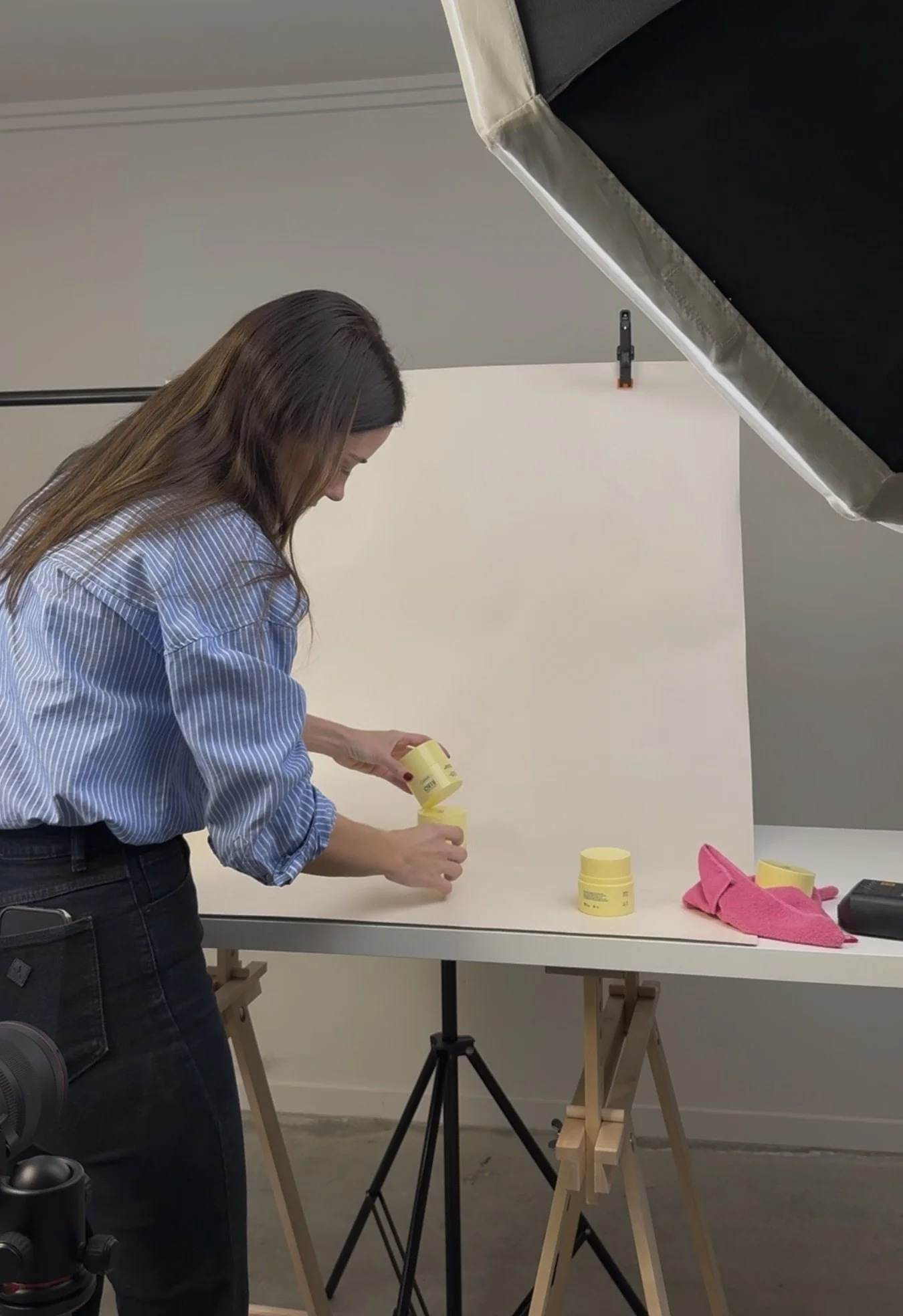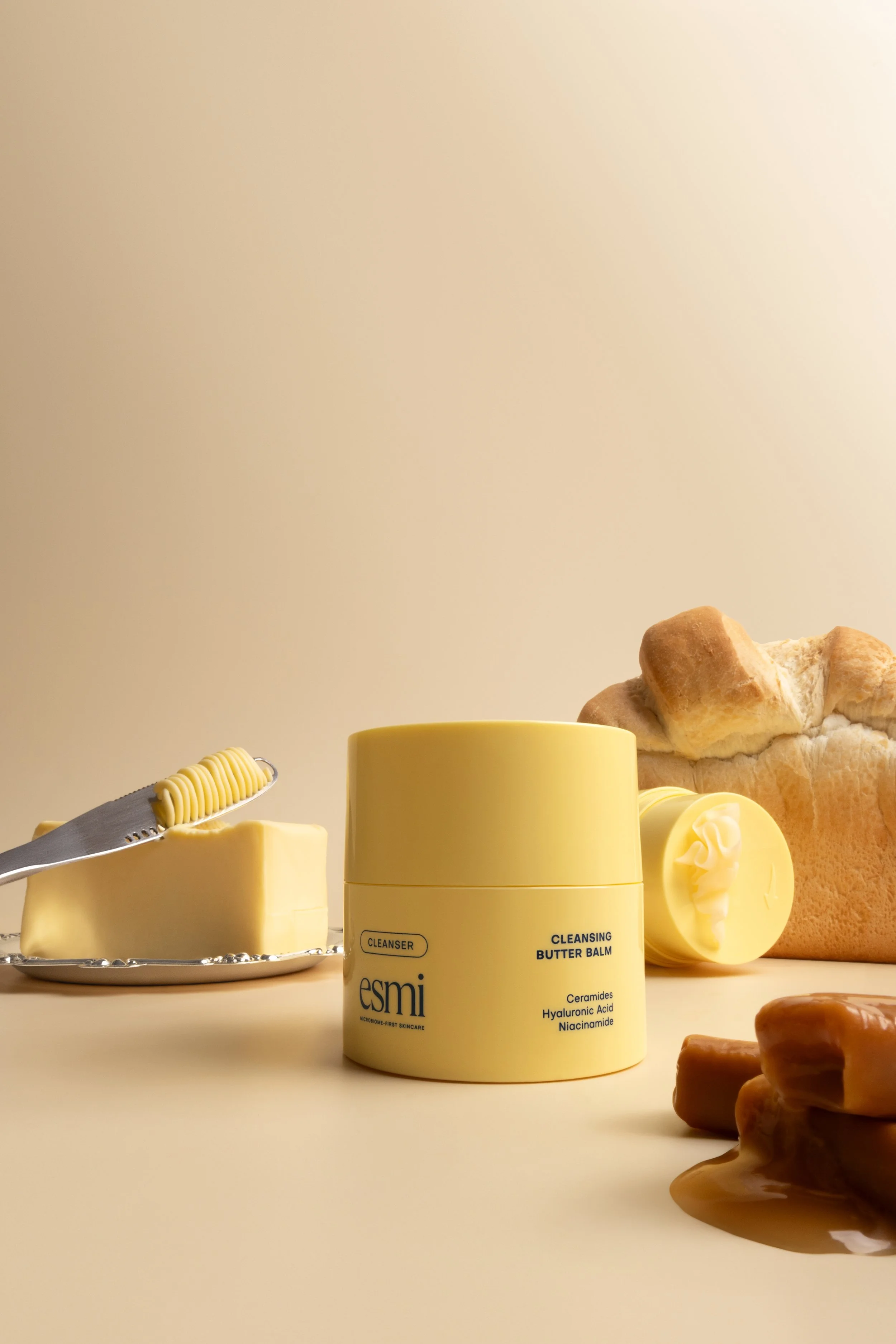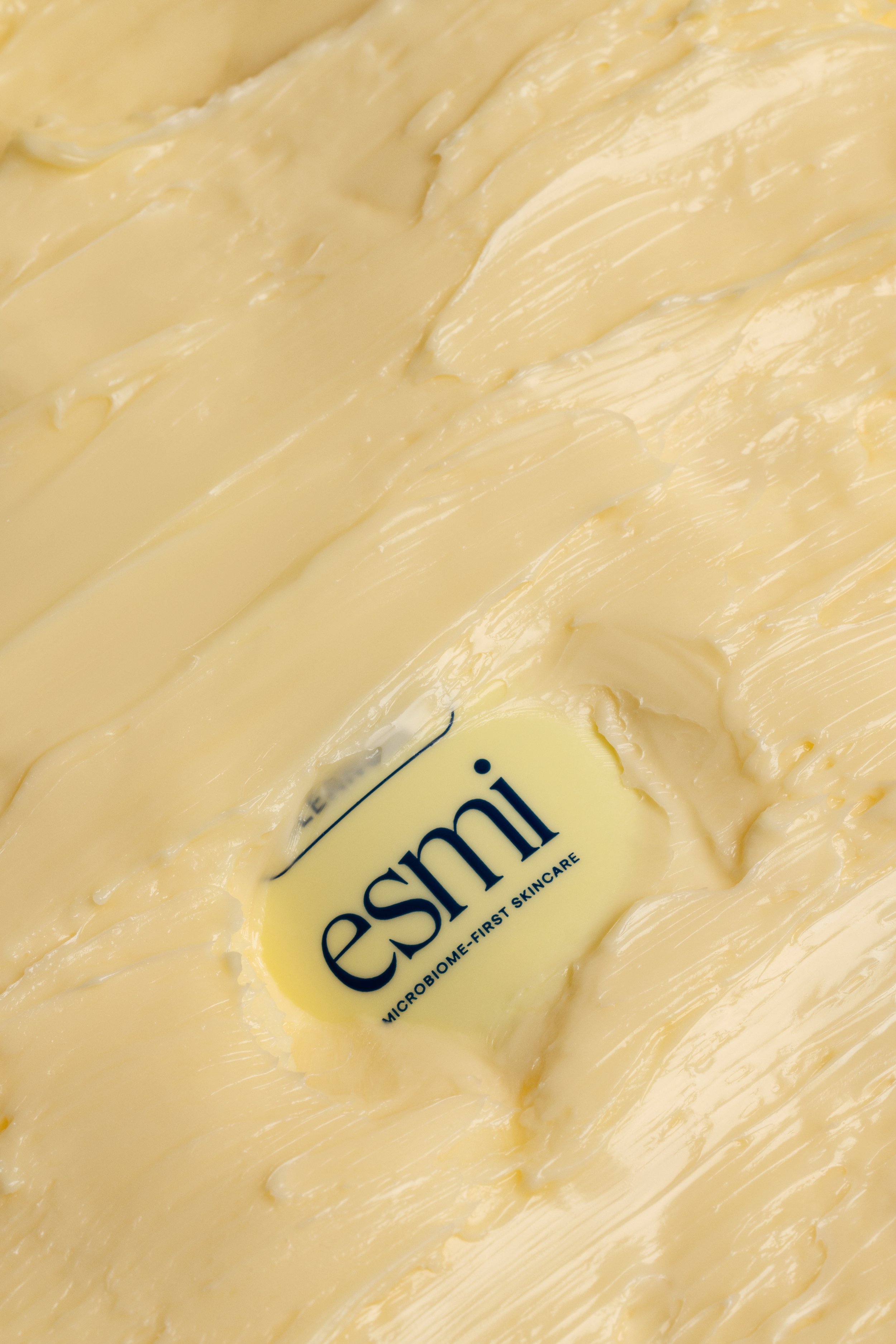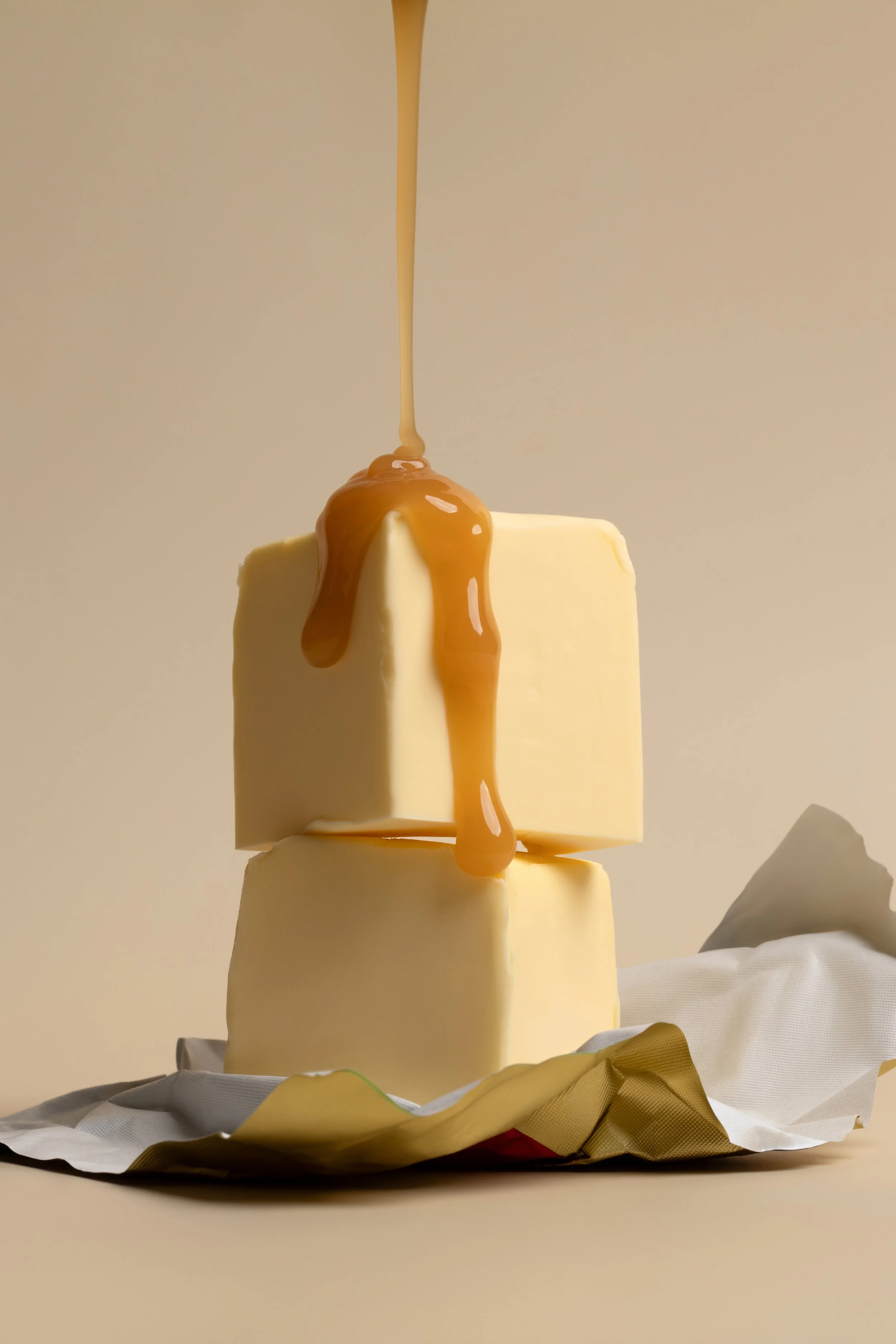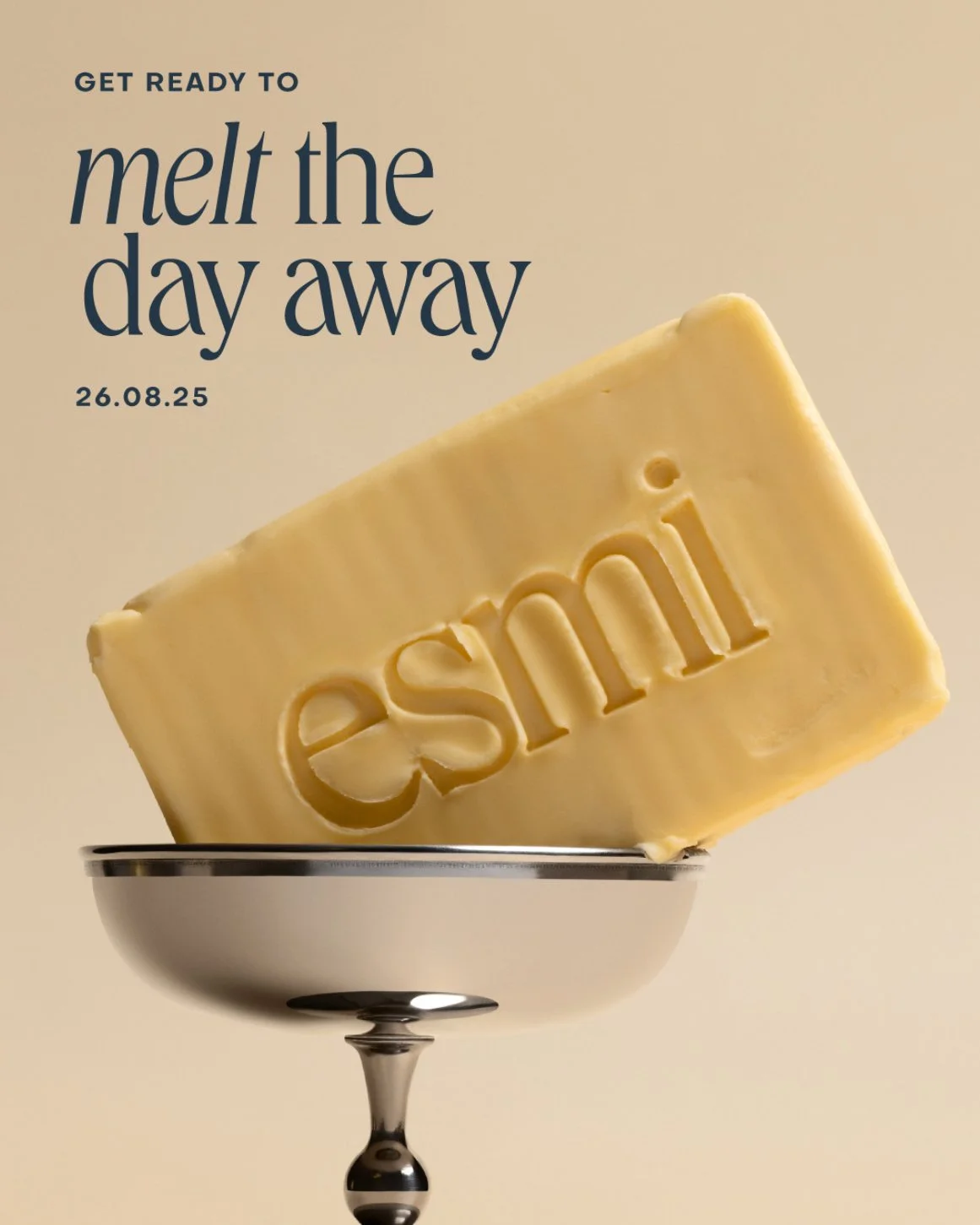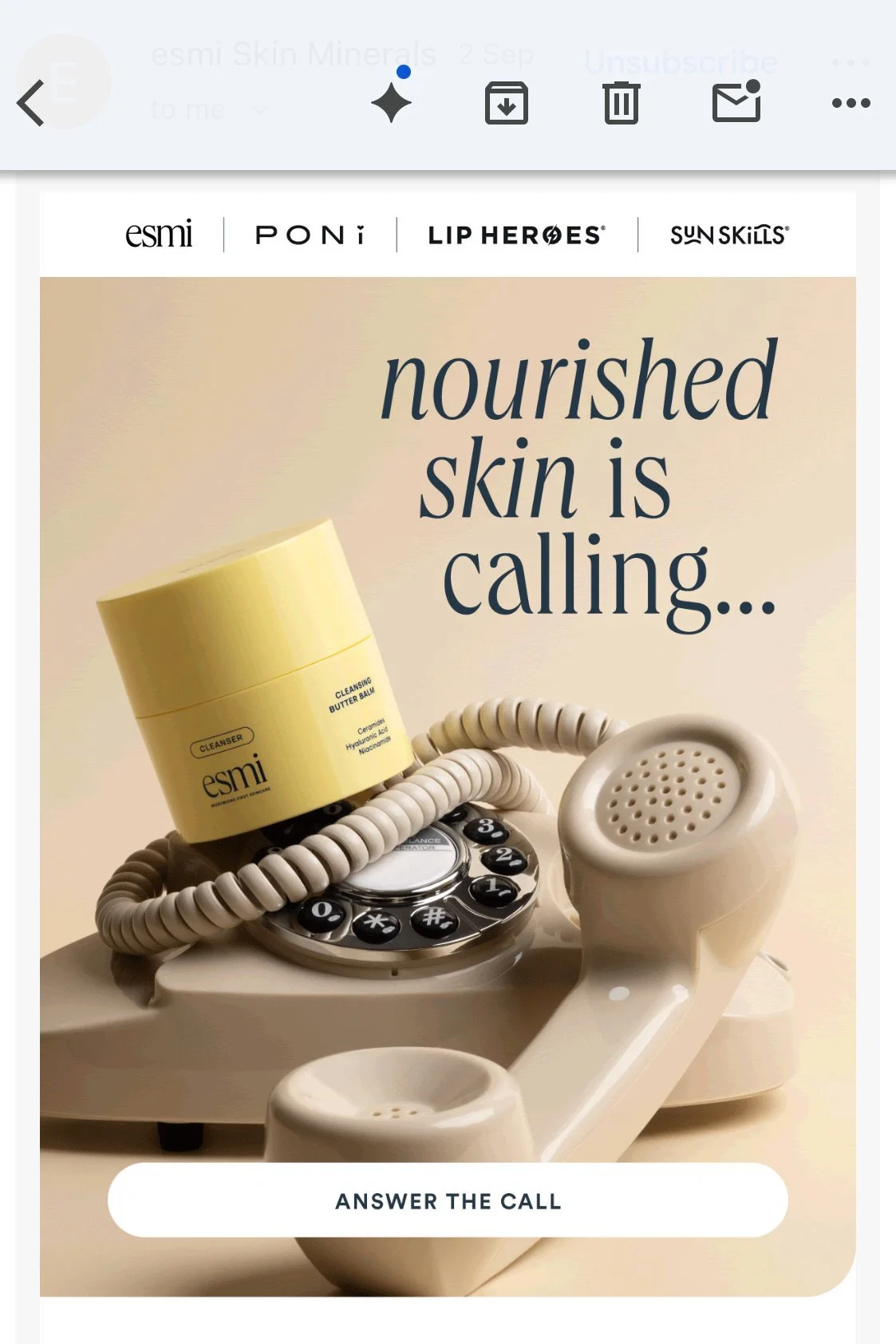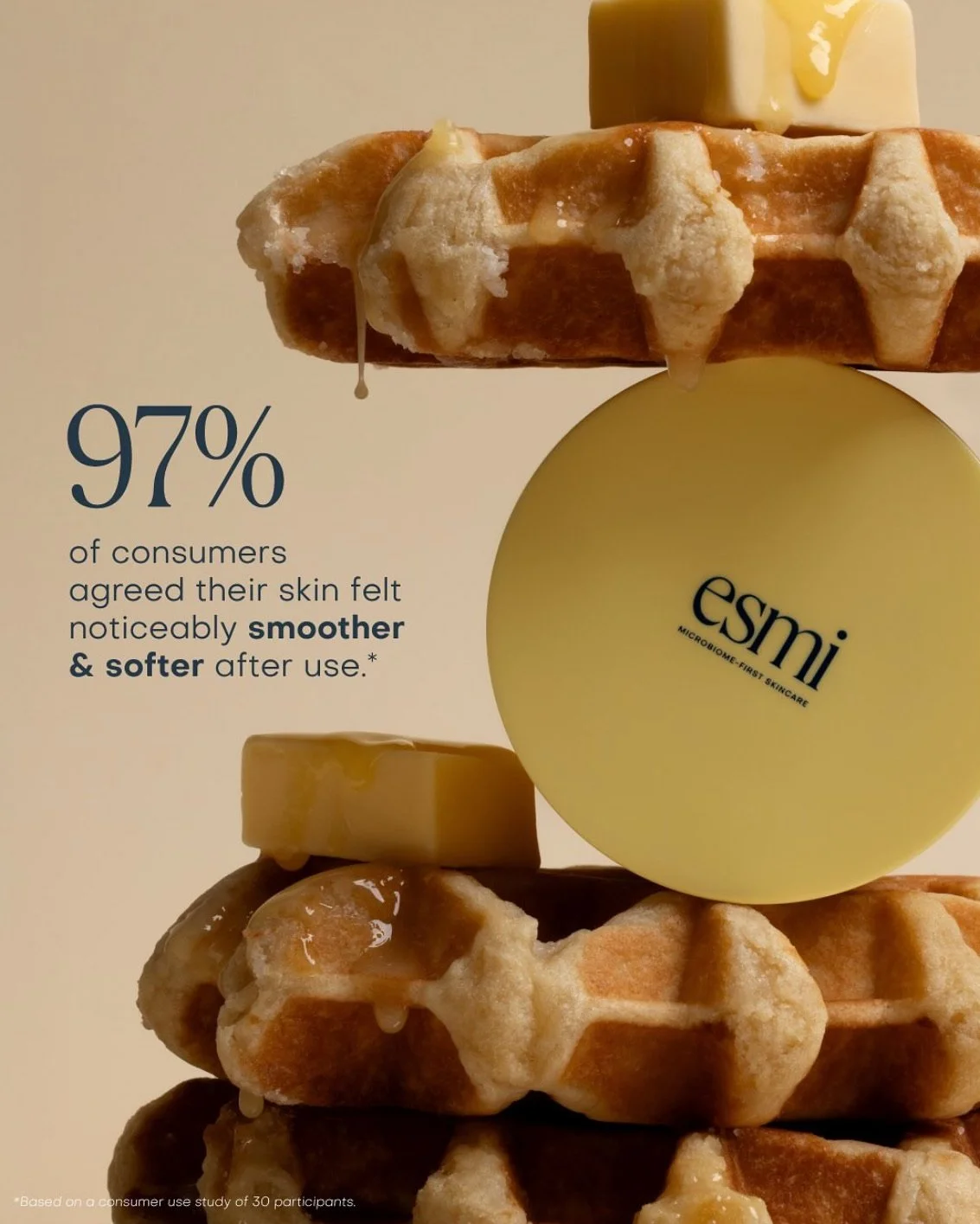Brief: Clean, still-life, ad-focused
Service: 3-month retainer
Deliverables: 10 images + 1 short-form videos/month
For this retainer, the aim was to create a bank of assets ready to roll out across the launch period for Esmi’s newest family member, Butter Balm.
During out first month, we focused on the product point of difference - hello, fun twisty tub!! We aimed for on-brand colours, a touch of butter as a nod to the texture, but mainly focusing on the gorgeous ribbons of buttery cleansing balm that came from each twist.
Month two saw us dive right into still-life with the motto being - the bolder the better, but also make it delicious.
At this point, I’ve bought my local Coles out of butter, my camera has permanent greasy fingerprints on it, and there’s a high chance I may not eat butter ever again 😂
Butter aversions aside, can we take a moment for this loaf of bread that was ACTUAL PERFECTION!! I mean, there was a real risk here of it becoming the main character and overshadowing the product itself. MVP to Baker’s Delight for helping to bring the vision to life.
Our final month was teasers - I wanted the assets to visually communicate the texture, the delicious scent notes, as well as creating a little bit of curiosity and hype around what’s about to drop. I kept props minimal, styling simple, and let the buttery, caramell-y textures speak for themselves.
I personally LOVED working on a launch this way. It was structured, well thought out, and bloody fun to pull together.
And the result? A launch campaign that felt like a fun story unfolding – no two posts/edms/ads felt the same!
One even stole the spotlight at the new Beauty Bar now open in Armadale!

